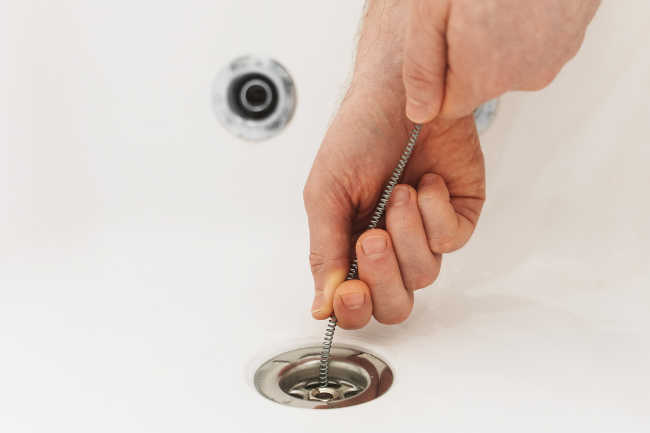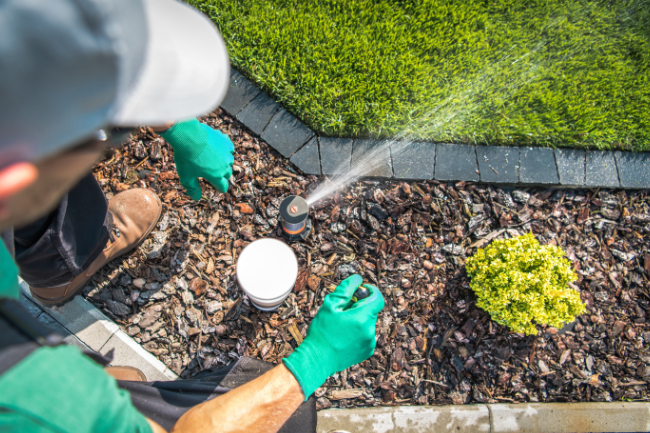Your Comprehensive Guide to Residential Plumbing
Posted by William Heinselman on
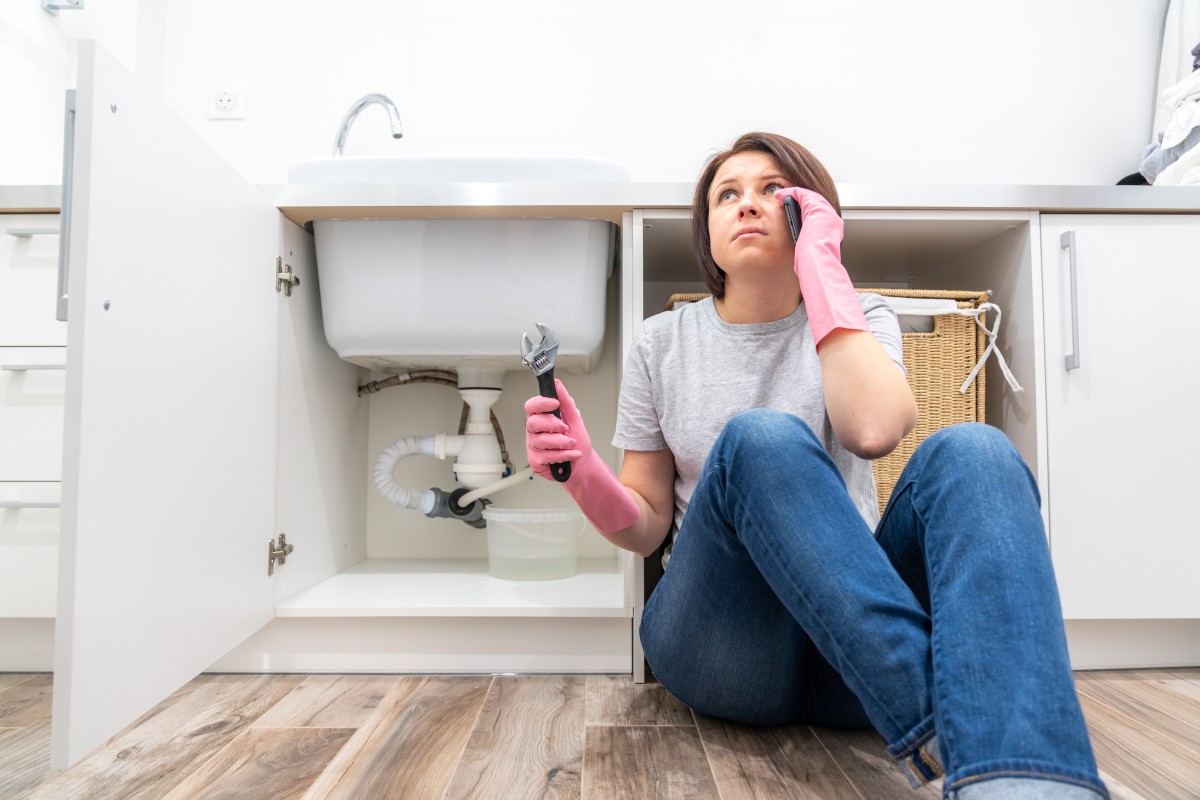
Home plumbing problems are a challenge for anyone who owns a house. Not only can they cause plenty of headaches, but residential plumbing problems can be especially expensive if not addressed immediately and properly.
Basic Residential Plumbing Systems
Basic residential plumbing systems play a crucial role in ensuring the smooth functioning of a home's water supply and drainage. A solid grasp of these basic plumbing systems empowers homeowners to troubleshoot issues, perform basic maintenance, and make informed decisions about their residential plumbing infrastructure.
Supply Systems
Water sources for residential systems typically include either municipal water supplies or well water, depending on the location. The main water supply line is the primary conduit through which water enters the home, branching off to various fixtures and appliances. Homeowners need to be familiar with the path of this main water supply line, as it forms the backbone of the entire plumbing network.
Water meters are crucial components installed to measure the amount of water consumed, aiding in accurate billing from municipal sources. Shut-off valves, strategically placed along the main supply line, enable homeowners to control the water flow to different sections of the house.
Understanding the significance of these elements in the residential plumbing supply system empowers homeowners to manage water usage efficiently, detect leaks, and swiftly address plumbing issues when they arise.
Drainage Systems
Residential drainage systems are vital for the efficient disposal of used water and waste, maintaining a clean and sanitary living environment.
Sewer lines form the backbone of this system, carrying wastewater from various fixtures within the home to the municipal sewer system or septic tank. Proper ventilation systems are essential components that facilitate the smooth flow of sewage by preventing airlock and ensuring optimal drainage.
Vent pipes allow air to enter the drainage system, preventing siphoning of water and unpleasant odors. Traps and drains play a crucial role in preventing the entry of sewer gases into the home.
Traps, typically found under sinks and drains, contain water to create a seal that prevents odors from rising through the pipes. Drains, equipped with strainers and stoppers, filter debris and prevent clogs.
A well-maintained and properly functioning drainage system is essential for the overall health and hygiene of a household, making it imperative for homeowners to understand and attend to these components.
Essential Plumbing Tools
Equipping yourself with a set of essential plumbing tools can empower homeowners to handle basic plumbing tasks and address common issues. Here are some must-have plumbing tools for homeowners:- Plunger: A versatile tool for clearing clogged toilets, sinks, and drains.
- Pipe Wrench: Used for turning pipes and fittings. It has an adjustable jaw for different pipe sizes.
- Adjustable Wrench: Useful for tightening or loosening nuts and bolts, commonly found on faucets and supply lines.
- Pipe Cutter: Ideal for cutting pipes cleanly and accurately, especially in tight spaces.
- Teflon Tape: A thin, white tape used to seal pipe threads, preventing leaks in threaded connections.
- Plumber's Tape (Pipe Dope): A sealant applied to pipe threads to create a watertight seal.
- Plumbing Snake (Auger): Used to clear stubborn clogs in drains and pipes.
- Plumbers Putty: A malleable substance used to create watertight seals around fixtures like sinks and drains.
- Plumbing Pliers: Designed with a long nose for gripping and turning small pipes and fittings.
- Hacksaw: Handy for cutting pipes and other plumbing materials.
- Adjustable Pipe and Basin Wrench: Used to tighten or loosen nuts in confined spaces under sinks and basins.
- Caulking Gun: Essential for applying caulk around fixtures to prevent water leaks.
- Bucket and Towels: Useful for containing water and cleaning up spills during plumbing repairs.
- Flashlight: A reliable light source for inspecting dark and tight spaces under sinks or behind fixtures.
- Plumbing Level: Ensures that pipes and fixtures are properly aligned during installation.
Common Residential Plumbing Issues and DIY Solutions
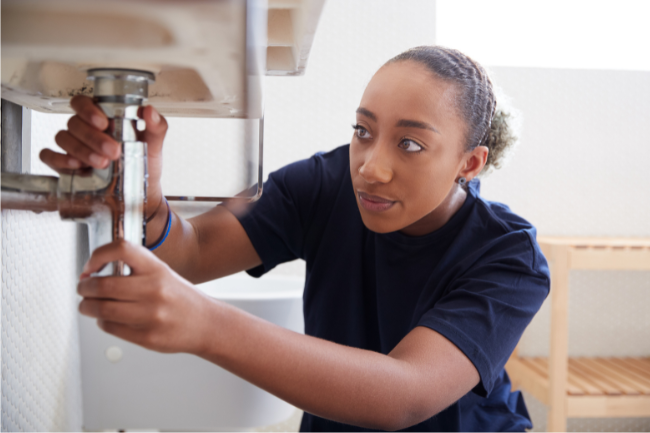
Common residential plumbing issues can arise unexpectedly, causing inconvenience and potential damage to your home. Here are some prevalent problems and DIY solutions that homeowners can tackle.
Leaky Faucets
Leaky faucets are a common household nuisance, not only wasting water but also contributing to increased utility bills. The most frequent cause of a leaky faucet is a worn-out washer or O-ring within the faucet assembly. To address this issue as a DIY solution, homeowners can start by turning off the water supply to the affected faucet.
Next, carefully disassemble the faucet using a wrench or screwdriver, taking note of the order of components. Inspect the washer and O-ring for signs of wear or damage and replace them with new, compatible parts. Ensure all components are reassembled tightly and turn the water supply back on.
Testing the faucet for leaks and ensuring a snug fit during reassembly can effectively resolve the problem. Regular maintenance and prompt attention to leaky faucets not only conserve water but also contribute to the longevity of the plumbing fixtures.
Clogged Drains
Dealing with clogged drains is a common challenge for homeowners, causing slow drainage and potential backups. A DIY solution for minor clogs involves using a plunger to create suction and dislodge the obstruction.
For more stubborn blockages, a plumbing snake or auger can be threaded down the drain to break up or remove the debris causing the blockage. Another effective remedy is a mixture of baking soda and vinegar, poured down the drain, followed by hot water. This chemical reaction helps break down organic matter. It's crucial to avoid using chemical drain cleaners, as they can be harsh on pipes and harmful to the environment.
Additionally, regular maintenance practices, such as installing drain strainers to catch debris, can prevent clogs from forming in the first place. By employing these DIY solutions and adopting preventive measures, homeowners can maintain clear drains and ensure the efficient flow of wastewater within their homes.
Running Toilets
A running toilet can be both frustrating and wasteful, as it leads to constant water flow into the bowl. One common DIY solution to address this issue involves adjusting the components inside the toilet tank. Start by removing the lid and checking the float level; if it's too high, it may be causing the water to overflow into the overflow tube. Adjust the float by bending the float arm downward or adjusting the screw or clip.
Additionally, check the chain connecting the flush lever to the flapper valve; if it's too long, it may prevent the flapper from sealing properly. Trim or adjust the chain length as needed. If these adjustments do not resolve the problem, it might be necessary to replace the flapper valve, which is a relatively straightforward DIY task.
By addressing running toilet issues promptly, homeowners can not only save water and reduce utility bills but also prevent potential water damage and ensure the proper functioning of their toilet systems.
Slow Bathtub Drain
Slow bathtub drains can be a common nuisance, causing standing water during showers and baths. One effective DIY solution involves removing the bathtub stopper and using a simple tool like a wire hanger to fish out accumulated hair and debris.
Another approach is to pour a mixture of baking soda and vinegar down the drain, followed by hot water. This chemical reaction can help break down soap scum and other residues that contribute to the slow drainage. Commercial drain cleaners are an option but should be used cautiously, as they can be harsh on pipes. Regularly using drain strainers can also prevent hair and other particles from entering the drain.
If these DIY methods do not resolve the issue, a plumbing snake or auger may be necessary to reach deeper clogs. Regular maintenance and prompt attention to slow drains can prevent more severe blockages and keep your bathtub draining smoothly.
Maintenance Tips for Homeowners
Regular maintenance is key to ensuring the longevity and efficient operation of a home's plumbing system. Here are some essential maintenance tips for homeowners:- Inspect for Leaks: Regularly check for leaks in and around sinks, faucets, toilets, and visible pipes. Addressing leaks promptly can prevent water damage and conserve water.
- Monitor Water Pressure: Ensure that water pressure is within the recommended range. High pressure can strain pipes and fixtures, while low pressure may indicate a clog or a more significant issue.
- Check for Corrosion: Inspect exposed pipes for signs of corrosion, especially in older homes. Corroded pipes can lead to leaks and reduced water quality.
- Test Sump Pump: If your home has a sump pump, test it regularly, especially before the rainy season. Ensure that it is functioning properly to prevent basement flooding.
- Flush Water Heater: Drain and flush the water heater annually to remove sediment buildup. This improves energy efficiency and prolongs the life of the appliance.
- Inspect Toilet Components: Check the toilet tank for any signs of leaks or running water. Replace the flapper valve or other components if needed.
- Clean Drains: Use drain strainers to prevent debris from entering drains. Periodically clean drains using a mixture of baking soda and vinegar to prevent clogs.
- Winterization: In colder temperatures, take precautions to prevent frozen pipes. Insulate exposed pipes, disconnect outdoor hoses, and consider insulating the water heater.
- Test Shut-Off Valves: Know the location of shut-off valves for individual fixtures and the main water supply. Test them periodically to ensure they function correctly in case of emergencies.
- Inspect Washing Machine Hoses: Check washing machine hoses for signs of wear or leaks. Replace them every few years, even if there are no visible issues, to prevent flooding.
- Maintain Septic Systems: If your home has a septic system, follow recommended maintenance guidelines, including regular pumping and avoiding flushing non-biodegradable items.
- Inspect Water Softener: If you have a water softener, follow the manufacturer's guidelines for regular inspection, maintenance, and replenishment of salt.
By incorporating these maintenance tips into your routine, you can stay proactive in preserving your home's plumbing infrastructure, prevent potential issues, and save on repair costs in the long run. Regular attention to these details contributes to a more comfortable and efficiently functioning home.
Upgrading Your Residential Plumbing System
Upgrading your residential plumbing system can bring numerous benefits, enhancing both efficiency and sustainability. Consider the advantages of modern fixtures, such as energy-efficient faucets that reduce water consumption, low-flow toilets that conserve water, and tankless water heaters that provide hot water on demand, eliminating the need for a constantly heated tank. Upgrading to these advanced technologies not only lowers utility bills but also contributes to environmental conservation.
Additionally, smart plumbing systems with features like leak detection sensors and programmable thermostats offer homeowners greater control and peace of mind. As begin upgrading your plumbing system, consult with a professional plumber to ensure proper installation and compatibility with your home's existing infrastructure. The investment in these upgrades not only increases the overall value of your property but also promotes a more sustainable and efficient use of resources.
Emergency Residential Plumbing Situations
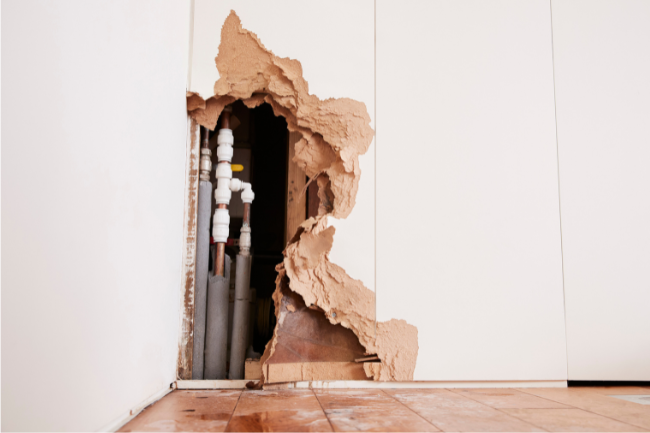
- Burst Pipes: Burst pipes can lead to significant water damage. It's crucial to shut off the main water supply immediately and seek professional assistance to repair or replace the damaged pipe.
- Sewer Line Backups: A sewer line backup can cause sewage to back up into the home. This is a health hazard and requires immediate attention from a plumber to clear the blockage and prevent further damage.
- Water Heater Failure: A malfunctioning water heater, especially in colder months, can result in a lack of hot water. In some cases, it may indicate a potential leak or other issues that require urgent repair or replacement.
- Frozen Pipes: In cold climates, frozen pipes can lead to bursts. Thawing frozen pipes safely and promptly is crucial to prevent further damage.
- Gas Leaks: Gas leaks pose a severe safety risk. If you smell gas or suspect a leak, evacuate the premises immediately, and contact the gas company and emergency services.
- Leaking Water Heater: A leaking water heater can cause water damage and compromise its efficiency. Turn off the power or gas supply to the water heater and seek professional assistance.
- Clogged Sewer Drains: A severely clogged sewer drain can cause wastewater to back up into the home. Professional plumbers have the tools to clear such blockages and prevent further damage.
- Leaking or Broken Fixtures: A sudden leak or breakage in fixtures, such as faucets, toilets, or water supply lines, can result in water wastage and potential damage. Shut off the water supply and address the issue promptly.
- Failed Sump Pump: A malfunctioning sump pump during heavy rains can lead to basement flooding. Regularly test and maintain your sump pump to ensure it functions properly.
- Appliance Malfunctions: Malfunctions in appliances like dishwashers or washing machines can lead to leaks. Turn off the water supply to the malfunctioning appliance and seek professional help.
Common Residential Plumbing Questions
The following list includes some of the top residential plumbing issues commonly encountered by homeowners and their solutions so you can be prepared for anything that comes your way. While many of these common at-home plumbing problems can be solved through a simple DIY fix, some may need the expertise of a professional plumber.
Should I Turn Off My Water When I Go On Vacation?
You may have remembered to double-check (if not triple!) the stove and windows before heading out to door on vacation, but what about your water?
Shutting off your water before you leave for an extended period is wise, but many homeowners decline to do so. Keeping your water turned on always leaves the possibility open of your pipes leaking or bursting. While this is unlikely, even a small leak can be catastrophic if you’re away from your home for days (or even weeks!). The worst situation you want is coming back home after a long trip to find your house flooded.
Simply avoid this disaster scenario by shutting off the water before you leave for a trip. Not only will it prevent leaks and bursts, but it will give you peace of mind so you can enjoy your vacation to the fullest.
What Can I Put In My Garbage Disposal?
Garbage disposals can be notorious for breaking down or clogging. However, this is usually due to the homeowner treating them as trash cans - which they aren’t. By putting the proper waste down, you can avoid many common issues with your garbage disposal.
What You Can Put in a Garbage Disposal
- Fruit scraps and pits
- Vegetable scraps
- Leftovers
- Ice
- Small bones, like those of fish
- Cooked meat
What to Avoid Putting in Your Garbage Disposal
- High-fibrous or “stringy” foods (e.g., celery and tough vegetables)
- Expandable rice or bread-based products
- Egg shells
- Animal bones and fat
- Paper or plastic materials
- Cooking oils and grease
Why Is My Toilet Running?
Running toilets are not only bothersome, but they can also be expensive and cost you hundreds of dollars (if not more!) in wasted water every year. Luckily, there is often a simple fix since the problem is usually caused by a faulty flapper or floater in the toilet’s water tank.
If the flapper or floater is not responsible, then it’s likely you’ll need to replace your toilet to solve the running water problem. A quick way to determine if your toilet is leaking is to insert a couple of drops of food coloring into the tank. Flush your toilet after waiting about 20-30 minutes. Then, check to see if there is color in the toilet bowl. If there is, then you have a running toilet leak.
If you have a leaking toilet on your hands, identifying the cause of the leak will determine the fix. If the problem is due to a faulty flapper or floater, then all you’ll need to do is adjust the hardware or purchase and install a new one from your nearest home improvement store. However, if it looks like you’ll need a toilet replacement, then you should contact a professional plumber for further assistance.
Can I Use Chemicals Drain Cleaners?
A common misconception is that chemical drain cleaners are the solution to residential plumbing problems involving clogs. In fact, the idea that chemical solutions are good for drain systems is not only false but also the most hazardous. The chemicals in chemical drain cleaner products (like Drano) can corrode the piping and increase the risk of leaks, not to mention they could have potentially dangerous reactions to other things found in the plumbing system.
A clogged drain can be fixed by a DIY job with all the main plumbing tools needed readily available at your local home improvement store. If you find yourself with a clog that can be fixed without the need for professional help, there are a few different home methods you can use to fix it on your own. Or, if you plan on hiring professional service, be sure they are a reputable company trained to handle the type of clogging found in your piping.
Why Is There a Sewer Smell in My Home?
If you notice a persistent sewer smell in your home, it may be due to a broken sewer line. These odors are often the clearest sign that you could have a cracked drain pipe. You should never get an odor from your drains when your household plumbing is in proper working order. If you do, you need a professional plumber to inspect further to find the cause of why toxic sewer gas is making its way into your home.
If your water smells like raw sewage, mold, or even decaying fish, the most likely culprit is bacteria building up due to decaying matter in your pipes. A variety of nasty things can grow in the dark recesses of dirty plumbing, including algae, fungi, and a range of bacteria, to create a musty water smell. While hydrogen sulfide is the most common culprit, it’s best not to take any chances when it comes to bacteria in the water. Disinfecting your water system with a shock chlorination treatment will typically kill off any foul-smelling bacteria lining your pipes.
Why Is There Never Enough Hot Water?
Constantly running out of hot water can be a frustrating inconvenience. Due to the type or condition of your hot water heater, there may be several reasons for your hot water heater to run out.
Your hot water heater may be too small for your needs. If this is the case, don’t run several hot water appliances at the same time. For example, refrain from turning on the dishwater at the same time you shower. This can prevent running out of hot water in the middle of a shower.
There may also be trouble with the gas burner. The gas burner may be getting too little gas - or too much - and cause a limited output for your heater’s hot water. For electric water heaters, make sure the heating elements are in good condition and replace them if necessary. If you suspect a problem with your hot water heater, call a professional plumber to inspect it.
When to Call a Professional Residential Plumber in Sacramento
While DIY solutions can be effective for minor plumbing issues, it's essential to recognize your limitations and seek professional help when needed. If you need assistance with the plumbing in your home, the experts at Express Sewer & Drain are here to help!
Contact us today to learn more about our residential plumbing services throughout the Sacramento County area.
Topics: Home Plumbing


